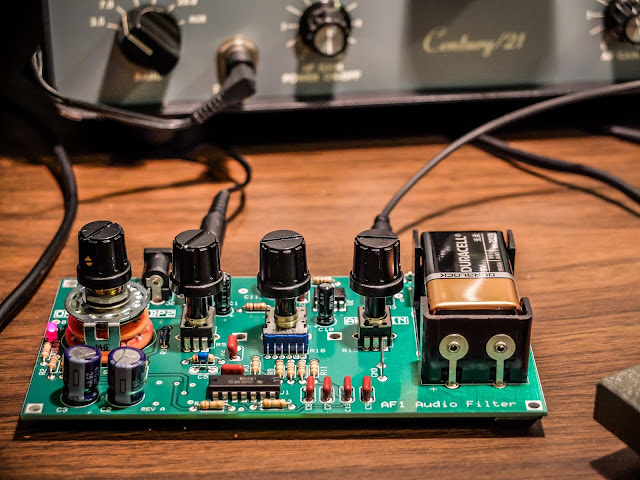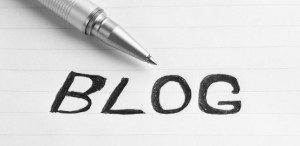 Now Casting: Ham Radio Experts for a TV Series
Now Casting: Ham Radio Experts for a TV Series
I received an e-mail from casting director Austin James of FSA Entertainment in Los Angeles about a new series he’s casting for a major cable network. He asked me to pass it along to you:

NOW CASTING RADIO EXPERTS
(Ham Radio, Shortwave/high frequency, technicians, enthusiasts/hobbyists)
AND ADVENTURERS WITH A THIRST FOR SOLVING MYSTERIES
FOR A NEW SERIES ON A MAJOR CABLE NETWORK!
Seeking a team made up of radio experts, code breakers and adventurers to embark on a mission to uncover the true meaning behind anonymous radio transmissions – “number stations.”
We are looking for experts who have thirst for solving mysteries, are adventurous & charismatic and have a STRONG knowledge of radio (including shortwave and Ham) as well as an interest in ‘number stations’ to be featured in this new and exciting series. We are looking for our ‘Indiana Jones’ of the shortwave world.
We are ALSO looking for ADVENTURERS – people who are not afraid to explore and investigate a wide range of worldwide mysteries; someone who is persistent, charismatic and fearless!
We are looking for people who have EXPERIENCE in travel, research and problem solving. For example: code crackers, techies, radio conspiracy theorists, private investigators, former FBI/CIA, hackers, former military, researchers, history buffs and urban explorers.
To be considered, please email the following information ASAP to: [email protected]
Please include:
- Name
- Age
- Phone number
- Email address
- Brief bio of you and your relevant experience to this (radio, explorer etc.)
- 2 recent photos
Matt Thomas, W1MST, is the managing editor of AmateurRadio.com. Contact him at [email protected].
 Notes from the shack
Notes from the shack
 Over winter break I have been putting in a lot of time behind the radio. Here’s the wrap up:
Over winter break I have been putting in a lot of time behind the radio. Here’s the wrap up:
First – more DX. In general, this is a good time of year to catch hams behind their rigs. Some contacts that I am particularly proud of:
4U1WB, The World Bank in Washington D.C.
ZD7DL, St Helena Island
WH6S, Kauai
C5YK, The Gambia
9H5BZ, Malta
MI5AFK, Northern Ireland
FG5GP, the island of Guadeloupe
ZS6TVB, South Africa
EA8DAZ, Canary Islands
VP2ETE, Anguilla
Second – working a lot of DX. There is the 90th anniversary of the International Amateur Radio Union (IARU) special event activations. Plenty of good DX participating in this and working multiple bands.
Cuba
Bermuda
Finland
Germany
Aruba
Venezuela
Jamaica
Ireland
Italy
Slovenia
Brazil
Third – working Santa (aka AA4EE) on Christmas Eve. The girls really enjoyed telling Santa what they wanted. Thank you Santa!
Four – joining the OMISS and the 3905 Century Club nets. I am not sure if I fully understand these nets. I get the convenience in pursuing Worked All States awards. That makes sense. However each club also has an additional bevy of other types of awards. The actual contacts during the nets seem a bit unfulfilling. But I may not yet fully understand these nets. I need to thoroughly read all the literature.
Five – Log of the World: I have uploaded the vast majority of my logs. I mentioned before about uploading my YI9MI logs. I also went back and uploaded my log from KD7PJQ back in Virginia. The logs from Korea (HL2/AD7MI and HL9MI) are now uploaded. All my logs using AD7MI have been uploaded.
Scott Hedberg, NØZB, is a regular contributor to AmateurRadio.com and writes from Kansas, USA. Contact him at [email protected].
 An interesting challenge
An interesting challenge
http://ny4g.blogspot.com/2015/12/qrp-dxcc-challenge.html
He calls it "QRP Wars - The Morse Awakens".
Cute.
Now the question is - can it be done?
My answer is, "Yes, I think it can." Even with the worsening solar conditions. But (and there's alway's a "but") I think this competition favors those who are retired and can send mondo amounts of time on the radio. It also favors those of us on the East coast, who are closer to Europe and the Caribbean. And with the ARRL DX Contest which is held in February, if you really put your mind to it, it should be possible to work QRP DXCC within 100 days.
Am I going to put my money where my mouth is?
Not sure at this point. I just might try it for fun and just may keep a "diary" of the effort here on the blog - just for the halibut. Let me cogitate on it for a while. I have a couple of days left until 2016 rolls around.
72 de Larry W2LJ
QRP - When you care to send the very least!
Larry Makoski, W2LJ, is a regular contributor to AmateurRadio.com and writes from New Jersey, USA. Contact him at [email protected].
 Great Circle Map Generator
Great Circle Map Generator
The map generator is the brainchild of Tom, NS6T, and can be found on his 'HAM STUFF' website along with some other interesting bits. The actual map generator can be found here.The user interface is simple and map generation times are fast. Anyone with a beam will likely be interested in this, should they not already have a great circle map for their present QTH.
I used my six-letter grid square identifier for centering the map. Depending on the 'distance' value used, one can tailor the map for local / regional work or for a worldwide setting.
This is the map generated for a distance unit of 500km and would be helpful for local VHF'ing:
This map was produced when a distance unit of 4500km was used ... nice for the 6m grid square hunter:
This worldwide map was produced with an input of 18000km:
Hopefully you might find the map generator of some value in your own shack.
Steve McDonald, VE7SL, is a regular contributor to AmateurRadio.com and writes from British Columbia, Canada. Contact him at [email protected].
 Finer than a frog’s hair split twice
Finer than a frog’s hair split twice
Elecraft AF-1 Audio Filter Kit
 |
| Elecraft AF-1 Audio Filter Kit |
Building the kit
Performance
Summary
Richard Carpenter, AA4OO, is a regular contributor to AmateurRadio.com and writes from North Carolina, USA. Contact him at [email protected].
 Friday at the ARRL & TAPR Digital Communications Conference
Friday at the ARRL & TAPR Digital Communications Conference
Back in October I headed to Chicago – HamRadioNow cameras in tow – to record the 2015 ARRL and TAPR DCC. It’s a three-day conference covering all aspects of digital Amateur Radio — digital radios that run analog modes; analog radios that run digital modes; hardware; software; operations… On Friday and Saturday, there are usually 8 45-minute talks. There’s a banquet speaker on Saturday, and Sunday morning is a four-hour ‘deep-dive’ into a single topic.
It’s an intense weekend of shooting. Then a lot of editing to produce each talk as a separate program. I just finished uploading the 8th and final talk from Friday.
If you like high-tech, digital stuff in Ham Radio, you probably already know all about the DCC and the videos, right? Well, maybe not. Just in case, stop by my YouTube Channel: www.YouTube.com/HamRadioNow and check out Episodes 221 – 230 for this year’s shows. And to see all the DCC videos that I have online, there’s this Playlist.
Gary Pearce, KN4AQ, is the host of HamRadioNow.tv. If you enjoy this and other HamRadioNow programs, help keep them 'on the air' with a contribution. Contact him at [email protected].
 Top Five K0NR Blog Posts from 2015
Top Five K0NR Blog Posts from 2015
 As we approach the end of the year, it is fun to look back to see which blog posts were read the most. WordPress has some great tools that make this easy to do.
As we approach the end of the year, it is fun to look back to see which blog posts were read the most. WordPress has some great tools that make this easy to do.
The most read post on k0nr.com concerns the use of amateur gear outside the ham bands: Can I Use My Ham Radio on Public Safety Frequencies? Actually, I have two blog postings that cover the same topic but one of them is a bit out of date. They both get lots of hits, but I’ve linked to the one that is updated. This is a hot topic as many people still believe strongly that no ham gear is legal on Part 90 frequencies (read through the comments on that post). This is why I took the time to write about it, attempting to explain it and educate the ham community.
The second hottest post was quite controversial: Are Kids the Future of Ham Radio? I got a ton of feedback on this one. People either resonated with its message or just thought it was crazy. I wanted to start a discussion on the topic so I guess it met that objective. Although it is hard to have a discussion when someone says your post is ridiculous. (Disclosure: the original title of the posting was Kids Are Not the Future of Ham Radio, which I later toned down.)
It’s a bit sad that this next post is still so popular: Solving the Baofeng Cable Problem. There is a really frustrating problem with how the Windows driver works with certain USB interface chips. Many folks who went out and bought low cost Baofeng (and other) radios got totally hosed up by this. Hence, the need for and the popularity of this blog posting.
Mobile radio installations are always a bit of an exploration, so I try to share what I learn when doing one. People seem to appreciate this kind of article and often ask followup questions via email. For whatever reason, my 2012 Jeep Wrangler Radio Install post continues to be a popular post on my blog.
One of my classic articles is the FM/VHF Operating Guide, just some basic information to help people get started with FM and repeater operating. I update it from time to time and it gets quite a few hits.
Hey, thanks for stopping by k0nr.com. Best of luck to you in the New Year.
73, Bob K0NR
The post Top Five K0NR Blog Posts from 2015 appeared first on The KØNR Radio Site.
Bob Witte, KØNR, is a regular contributor to AmateurRadio.com and writes from Colorado, USA. Contact him at [email protected].



















